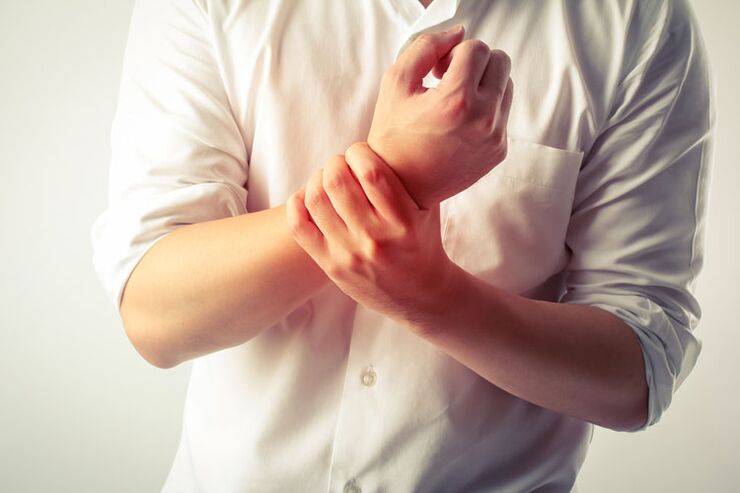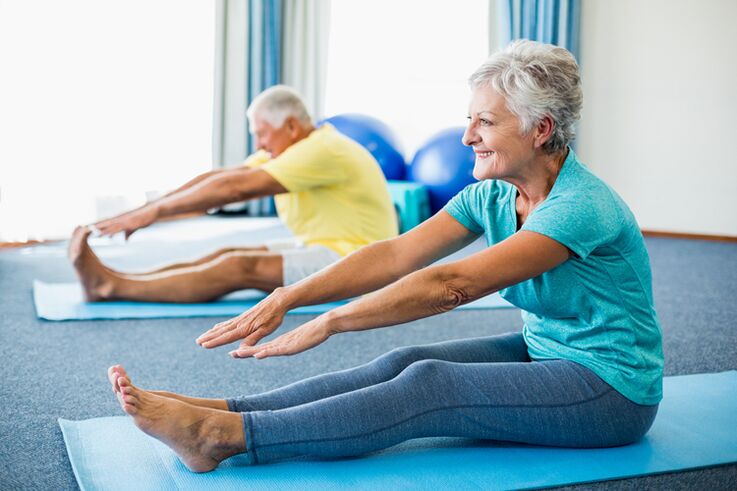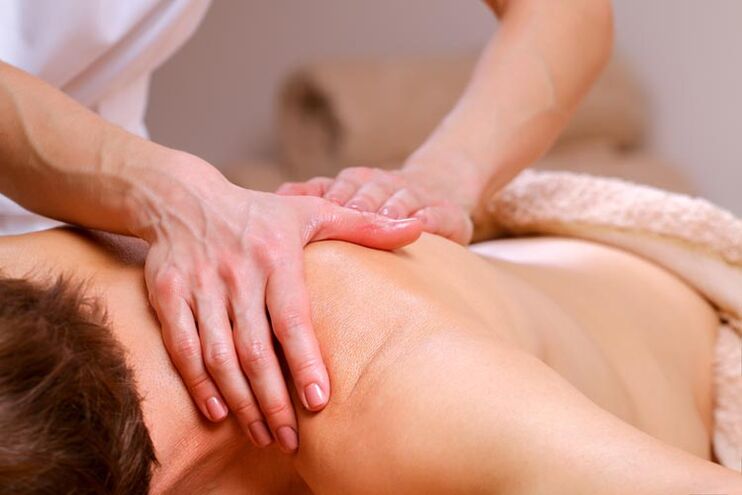
Osteochondrosis is the most common disease in the world.Most of the people in the age of 35 are osteocondrosis in one or the other of the cervical waist.Recently, the number of people suffering from the severe forms of the disease has tend to rejuvenate the disease and reduce the lower age.This is the fact that the growing number of growing in the world is engaged in sedentary work and a sedentary lifestyle.Meanwhile, the disease is very dangerous and should know what any man is doing - osteocondrosis, how it shows and how it is treated, to recognize the symptoms and start treatment in time.
Causes of cervical osteocondrosis
Osteochondrosis is one of the few diseases that are only characteristic of people.This disease does not occur in other animals.The reason for this is such a different human feature as a steep walk.The vertical position of the spinal column shows that the spine is gradually deteriorating and gradually deteriorating the osteochondral texture of the spine.
Human waists start from a cervical area.In this part there are only seven vertebrae - from the first seventh.Vertebrae is separated from each other by intervertebral disks. The cervical spine is primarily a particularly sensitive part of the spine in this area, which is associated with increasing mobility of spines.The disease in the cervical region is primarily reflected in the disks with a weak point in the structure of the spine.
The spread of cervical osteocondrosis is also facilitated by factors such as the relative weakness of the small size and neck muscles of the vertebra.In addition, the development of cervical osteochondrosis has sufficiently affect the supply of blood supply to cartilage tissue.
Thus, the development of the disease is a complex and long process and there is no reason.Although a person is a relationship between sedentary work and cervical osteochondrosis, the disease, the disease is often in the weighted people, especially in various athletes.
In older people, as a rule, the degradation of vertebral structures is an inevitable process related to the weakening of the body's aging and protection.However, the most common type of pathological type of cervical osteocondrosis is the most common pathological type, played a major role in foreign or domestic adverse factors.
Contributing factors for the development of osteocondrosis of the neck:
- Weak posture
- Curvature of the spine
- Back Injuries
- Weight loss
- Hard physical work
- Sitting work
- Seat Lifestyle
- Metabolic disorders
- Often hypothermia
- Restless position while sleeping
- Stress, over-work
- Hereditary factors
- Infectious diseases
- Individual body structure features, for example, a very long or very short neck
Development of cervical osteochondrosis
There are four stages of the disease.It is not always easy to identify the stage of the symptoms, as sometimes osteochondral tissue degradation rate cannot be compatible with the symptoms observed in the patient.

First-class
Destructive processes start in the osteocondral texture of vertebrae.As a rule, symptoms are moderate in this stage of cervical osteochondrosis.Patients either never see them or do not associate them with the diseases of the spine, but they attract them to stress and extreme work.
Secondary
The height of the disc begins to decrease and cracks appear on the surface.The symptoms of cervical osteochondrosis in this stage are constantly suitable for pain, weakness and certain areas of the face.
Third grade
The form of disk bearings, cervical veins and muscles damaged.The patient experiences dizziness and pain in the back of the head.
Fourth degree
Osteoofites appear - the growth of the bone tissue of the bone tissue, which protects the drums from stress, causes nerves.This leads to harshness of action and harm to neighboring joints.
Cervical Osteocondrosis: Symptoms
The main symptoms of the osteocondrosis of the cervical spine:
- Neck and shoulder pain
- Muscle weakness
- Growing sweat
- Match
- Coordination loss
- Dizziness
- Vision and hearing deterioration
- Blood pressure has increased
- Headache
These symptoms, which are typical for the osteocondrosis of cervical spine, can participate in all stages of the disease.In most cases, only a few symptoms are observed from the list and the rest may disappear.For the first time, a person facing such signs of the disease does not always suspect that it is cervical osteochondrosis.Therefore, he can contact the surgeons - therapists, cardios, neurologists, surgeons.As a result, the correct diagnosis can be made with a significant delay.

Syndromes
Several syndrome with cervical osteochondrosis, ie typical conditions of characteristic signs complex.As a result of the disease, which nerves and vessels are affected by:
- Vertebral artery syndrome
- heart syndrome
- Hypertensive syndrome
- radicular syndrome
- Cervical Migraine syndrome
Vertebral artery syndrome is one of the most unpleasant and dangerous complications in cervical osteocondrosis.This is due to the reduction of blood flow through the artery working along the spine and supply a brain.Syndrome is systematically or periodicals in symptoms such as weakened hearing and vision.In some cases, consciousness can occur.A change of syndrome is often observed, it is normal in the artery in the artery, but may fall sharply when the head becomes a direction or another.
The roots of heart syndrome, diaphragm or the innervated nerves of the pectoral muscles are developing.As a result, if the patient has a direct impact on the heart, it may feel the pain reminiscent of cardiagia.However, the syndrome can be characterized by events such as tachycardia, hypotension and arrhythmia.
Hypertension syndrome is one of the most dangerous complications.Unlike vertebral artery syndrome, it is due to the confrontation of the veins that hinder blood flow from the beginning.The syndrome leads to an increase in intrachial pressure, which manifests itself in symptoms such as nausea, vomiting and headaches.
The cervical migraine syndrome appears a lot in the etiology with a classic migraine.Shows itself in severe pain in the back of the head.Pain is paroxismal, lasts until ten hours and accompanied by vomiting.
Radicular syndrome is the most common syndrome in the osteocondrosis of cervical spine.The cervical vertebrae stems from compression of individual nerve roots.The neck can be expressed in the back of the head, shoulder blades, shoulders, the tone of the tone of the lap (inability to fulfill any manipulation) and pain, shoulders, shoulders and weaknesses).
Often, individual symptoms, which are characteristic of several syndromes or different syndromes, can be observed at a time.
As you can see, the manifestations of the disease with the osteocondrosis of the cervical spine are multifaceted and the patient is not always able to identify the reason for the occurrence.If you encounter similar symptoms, this is a reason to consult with the doctor.
Diagnosis

It is recommended to consult a therapist to make a diagnosis.He applied to experts - an orthopedist, a helicoist, a neurologist.
The following types of work are used for diagnosis:
- Radiography
- Calculated Tomography
- Magnetic tomography
- Ultrasonic scan of neck vessels
X-Ray, Vertabra's displacement, growth - allows for osteophytekits and salt beds and discs.Calculated tomography includes creating a number of x-rays that give a three-dimensional view of a body, in this case, in this case, cervical spine.The degree of pathological process - the nature of the nervous compression, the structure of osteophylls, the height of the discs, etc.Ultras, the ultraction of neck ships, helps to determine the changes in blood flow in the large veins of the disease.
Treatment of cervical osteocondrosis at home
How to treat osteocondrosis of the cervical spine in the house and usually treated?The drug has prepared many methods to fight the disease.Some treatments can be used at home.However, this process is not possible in the long and complete recovery, especially in old age.However, it is possible to slow down and stop destructive processes within the spine in any stage of the disease.
In the initial stages of the disease, methods are generally conservative.Several methods are used to treat cervical osteochondrosis:
- The drugs
- Therapeutic training
- Physiotherapy
- Massage
- Special tools to make the spine
The disease went to the final stage and surgical intervention in the treatment of osteochondrosis of the cervical waist can be used in the treatment of osteochondral structure.
Medicine
The following drug types are used:
- Chondroprotants
- Vitamin
- Analgesics
- Anti-inflammatory drugs
- Antispazmodic
When there is acute pain syndrome associated with osteocondrosis, the first priority is to eliminate it.As a rule, medications are used by mouth, but if ineffective, in difficult cases, an anesthetic is used.
Antispazmodics are used for muscle spasms.Muscle neighbors demonstrate the greatest effectiveness in osteocondrosis.Ointments with non-steroid drugs can be used as anti-inflammatory and painkillers.
Syndromes associated with blood supply with impaired circulation and brain - hypertensive and vertebral artery syndrome in the brain, medications that eliminate the undesirable effects of blood pressure agents and nootropic drugs are carried out.
Therapeutic training
Physical therapy is the simplest and accessible type of treatment for cervical osteoocondrosis and at the same time, it is quite effective.Physical therapy can be done at home.The intensity of training with osteocondrosis does not play a decisive role;You only need regularity.First of all, the physical education aims to strengthen the neck muscles that compensate the inadequate functionality of the spine and strengthen their neck muscles that help support the weakened spines.

Daily exercises are recommended to strengthen the neck muscles.They can be very simple in different directions or more complex, more complex, or more complex, the neck muscles in their hands.They can perform them both at home and in work.For example, if the job is seated, it is useful to do such exercises after sitting in an hour or sitting on an hour or after sitting on the monitor.However, it can only be exercised outside the period of exacerbation and no pain.Otherwise, they can only worsen the situation.
Strengthening the muscles of the shoulder zeals, for example, is not less effective with regular exercises with light dumbbells.However, the lifting of heavy objects (weights, barbell) is contraindicated.Regular swimming that eliminates the stress of spine is also useful.
Physiotherapy
Physiotherapy is a treatment method that uses certain physical areas and radiation to influence the body.A positive feature of physiotherapy is that there are a minimum number of opposites.
The following physiotherapy methods are used in the treatment of osteocondrosis:
- Ultrasonic effect
- Laser therapy
- The effect of magnetic field
- Electricity (electrophorez)
The magnetic field has a positive impact on the damaged tissues of the body and has an anti-inflammatory and analgesic effect.Ultrasound improves metabolic processes in tissues and eliminates swelling.The same can be said about laser therapy.Electrophorez is often used in combination with drugs, because the use of electric current accelerates the absorption of the body.
Massage

Massage reduces the growing muscle tone that causes spasm and reduces the lymphatic flow causing swelling.The procedure helps to improve the circulation of blood in the affected area of intervertebral disks.
Other treatments
What do you need to do with cervical osteocondrosis if classical home treatment methods do not help?A special device is used to reduce the burden of cervical spine - makes your neck constantly normal.It is recommended to wear it during the pain or for a long time.
You need to arrange a place to sleep to prevent separations.The pillow should not cause the neck curvature and the mattress should be firm and even.In some cases, special sleeping funds - orthopedic mattresses and pillows - can help.
















